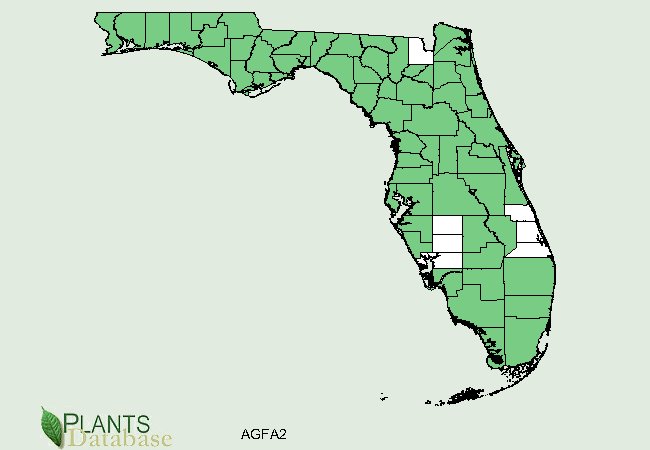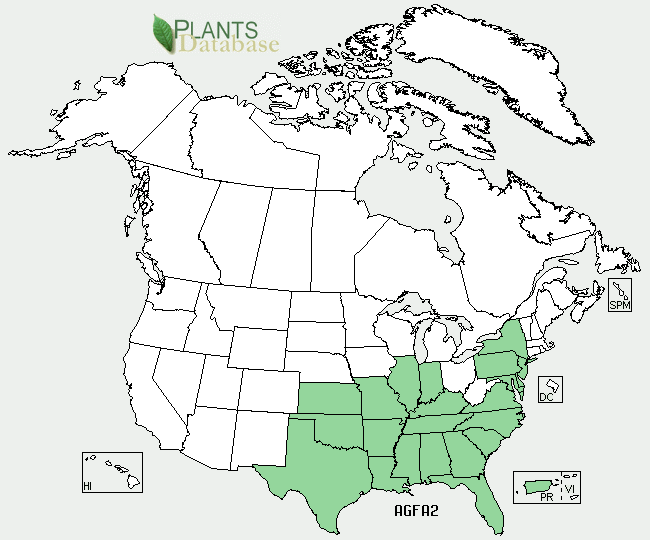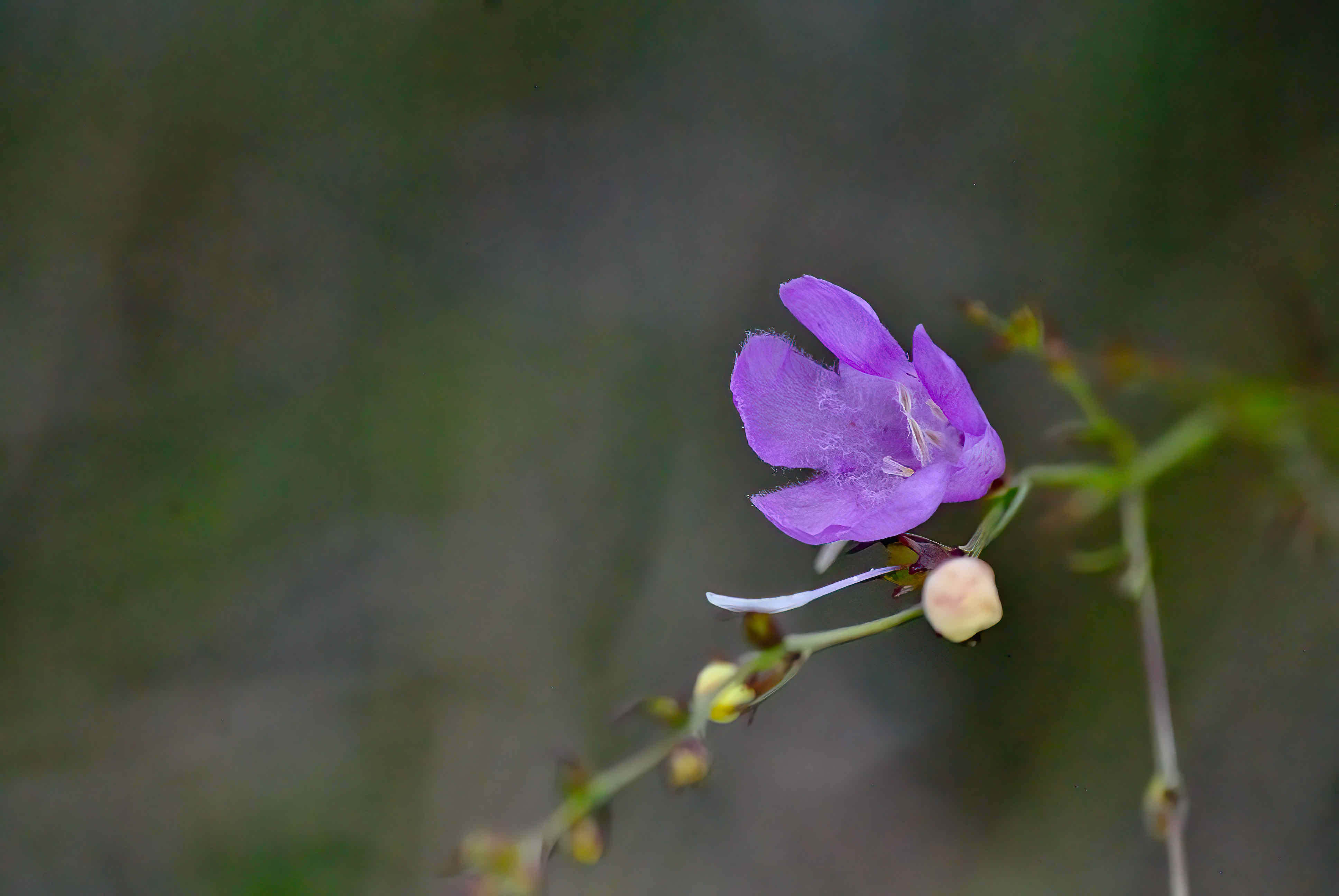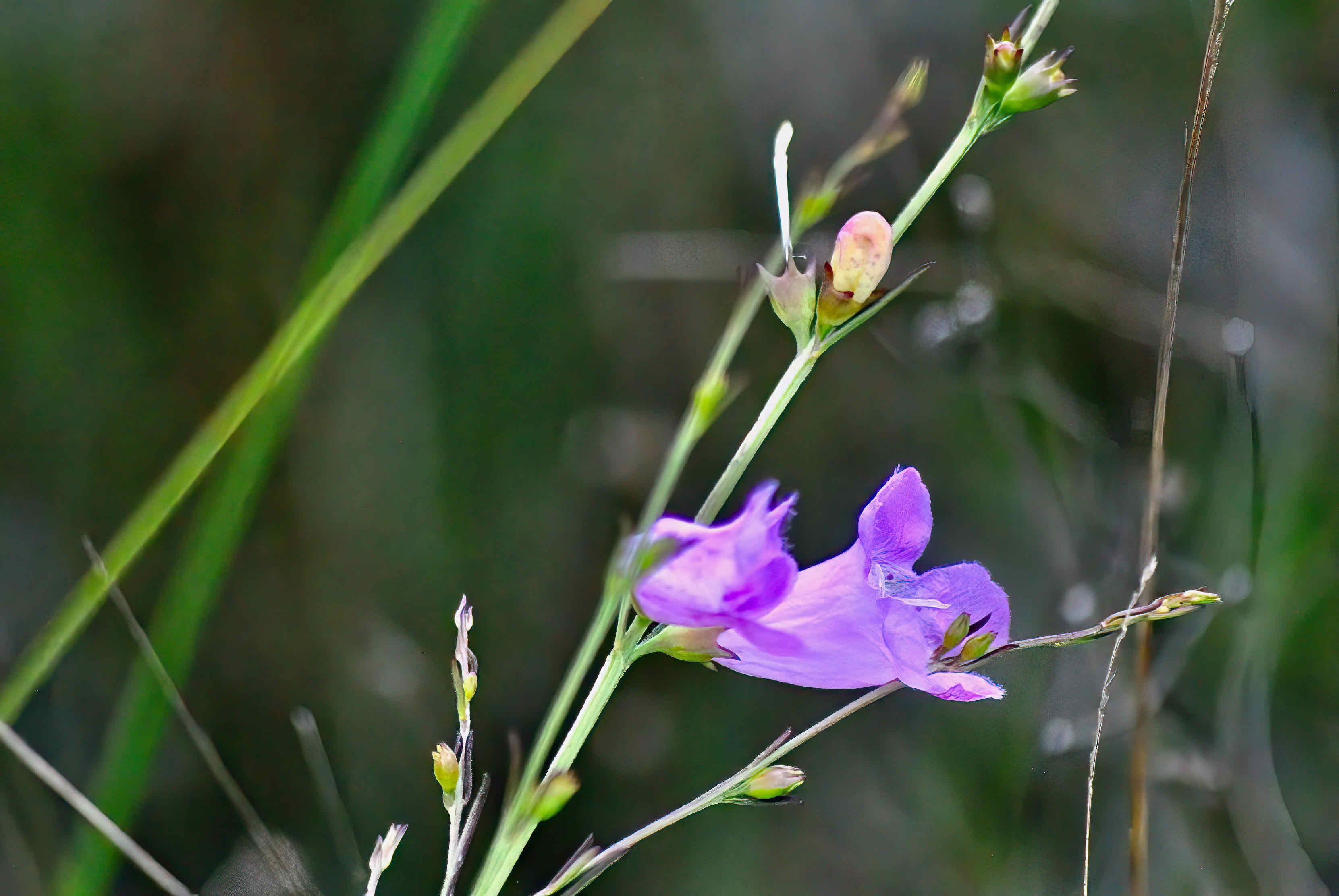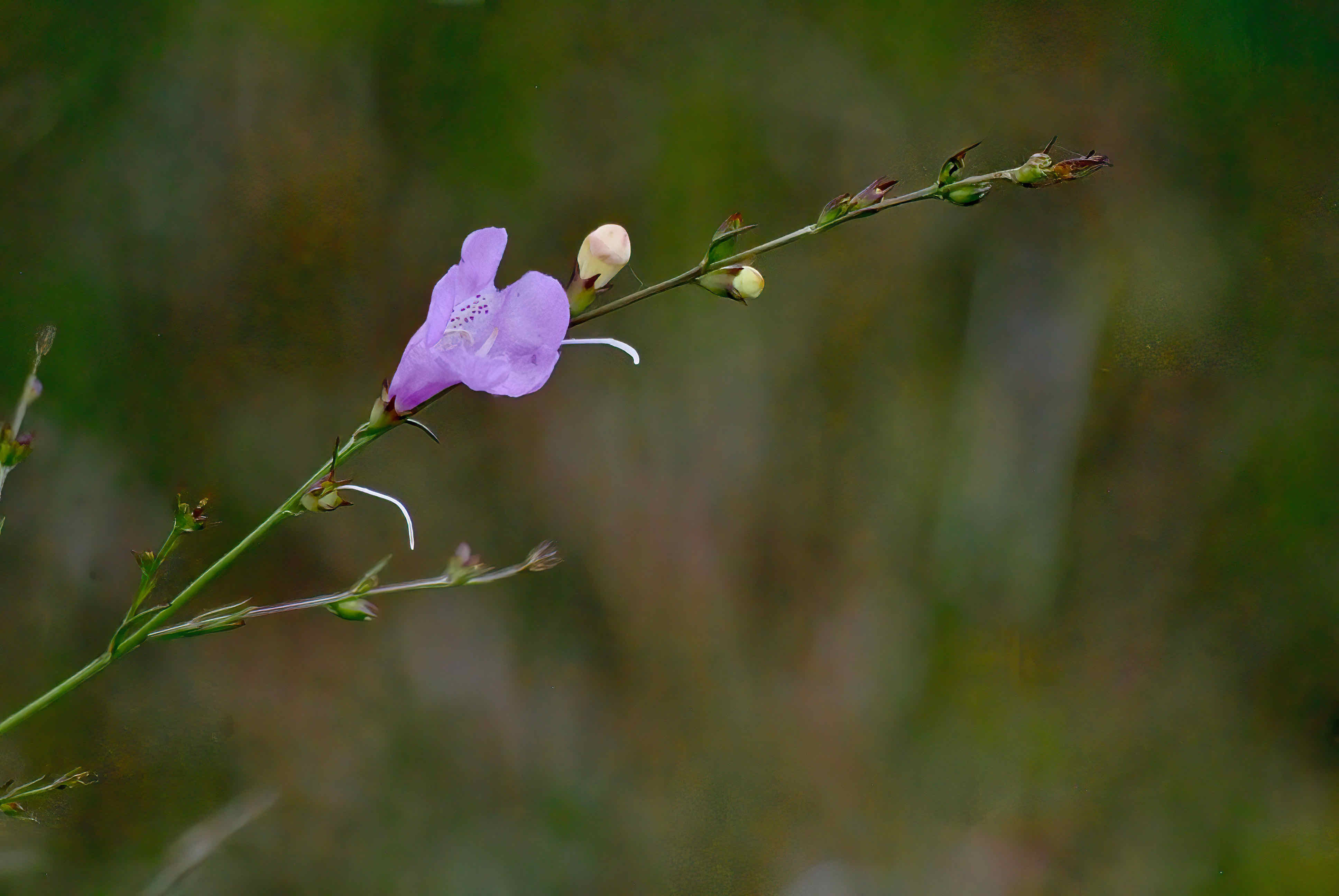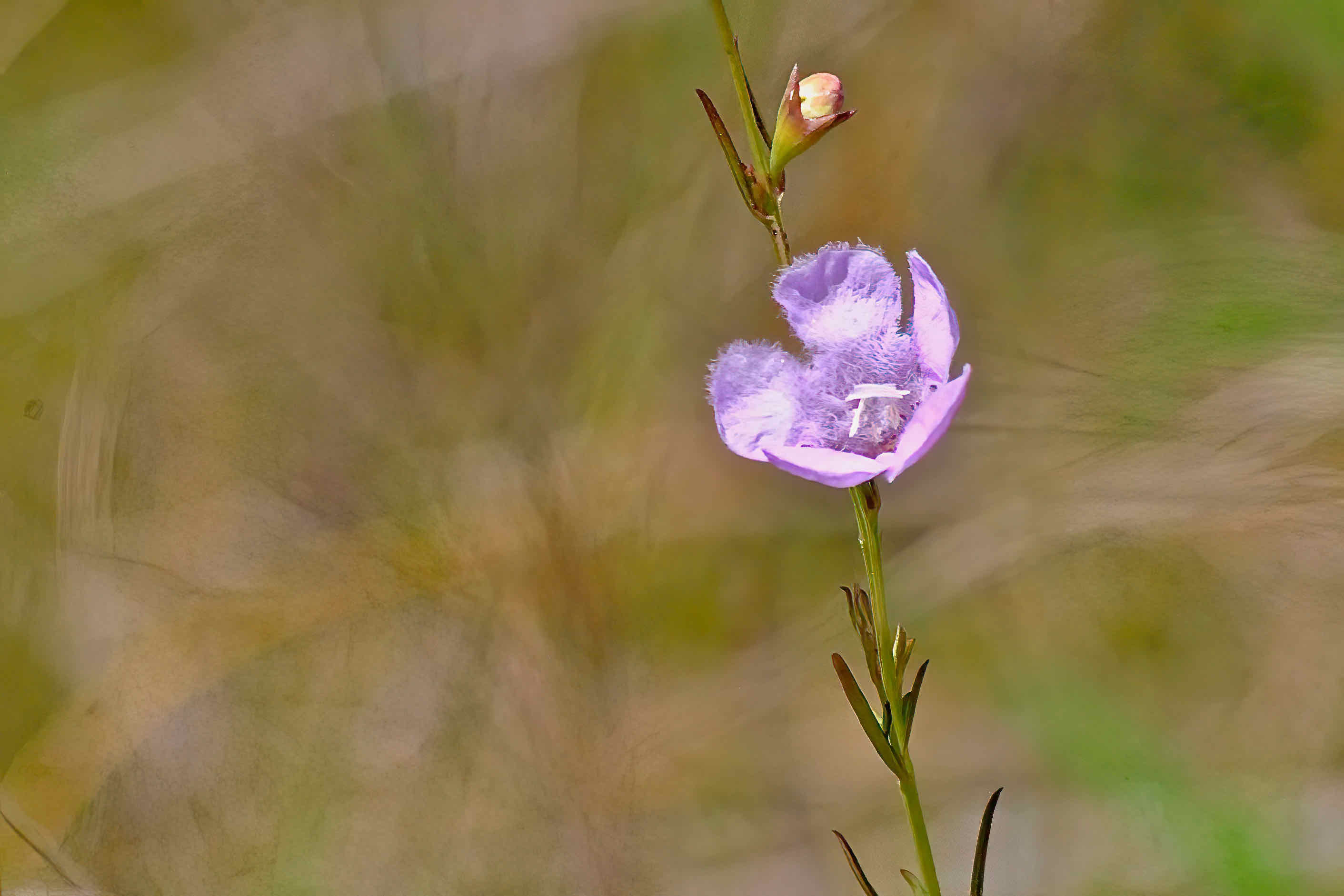
Beach false foxglove, photographed at Shark Valley, Everglades National Park, Miami-Dade County in May 2015.
There are something like 16 species of false foxgloves native to Florida, of which five are native to South Florida. The most widespread and probably the best known is beach false foxglove, Agalinis fasciculata. And while it can be found in beach dunes, it's actually classified as a wetlands plant, and you'll more likely to find it growing along the edges of a lake, in a wet prairie or wet flatwoods.
It's a pretty plant, with gorgeous purple flowers. It's also a Florida native, found in nearly all of the state's 67 counties. Beach false foxglove's range extends throughout the eastern and central United States as far north as New York and as far west as Kansas and Oklahoma, places that haven't seen blue water for more than a few million years.
It's fairly common in South Florida but it is scarce in other parts of its range. Maryland lists it as endangered and New York classifies it as rare. Beach false foxglove is also found in parts of the Caribbean, including Puerto Rico and Hispaniola. Favorite habitats include wet pinelands, savannas, prairies, marshes and the edges of lakes. The plant itself is tall and lanky, growing to about four feet. It is an annual throughout its range, blooming May through September. The flowers are pinkish purple with a a lighter throat marked by a series of dark spots. Each flower has five petals that are hairy and fused together to form a tube. It produces a seed-filled capsule as its fruit.
The leaves are somewhat needlelike, arranged opposite each other in fascicles, or bunches, along the stem. The stem is erect, purplish or green and multibranched. Beach false foxglove is a hemiparasite, like other false foxgloves. What that means is it's partly parasitic, able to collect some water and nutrients on it's own but also capable of stealing from neighboring plants what it can't get on its own. Tenticle-like structures called haustoria are able to penetrate the roots of its neighbors and take what it needs.
The haustoria are able to do this somehow without the host plant rejecting them as foreign invaders. Beach false foxglove isn't picky when it comes to choosing hosts; anything from a wide range of pines and hardwood trees will do fine. (Some hemiparasites can live without taking from their neighbors, American bluehearts being one example, but we don't know if that's the case with beach false foxglove.)
That beach false foxglove is a hemiparasite makes it a difficult plant to cultivate unless you happen to have one of the hosts on your property, according to the Florida Native Plant Society. It is used in landscaping to attract birds, bees and butterflies, but needs constantly moist soil. It is a host plant for the common buckeye butterfly and deer will forage on it, although it's not high on their list of favorites.
Other common names for beach false foxglove include clustered false foxglove, purple false foxglove, fasicled false foxglove, tall false foxglove, slender leaf false foxglove and gerardia. Until relatively recently, it was considered a member of Scrophulariaceae, the figwort family.
However, beach false foxglove and other false foxglove species have been recently reclassified and included as members of Orobanchaceae, the broomrape family, after DNA testing. Broomrapes also happen to be hemiparasites.
Shark Valley — Everglades National Park
Photo Gallery — Click on photo for larger image
U.S. Department of Agriculture Distribution Maps
